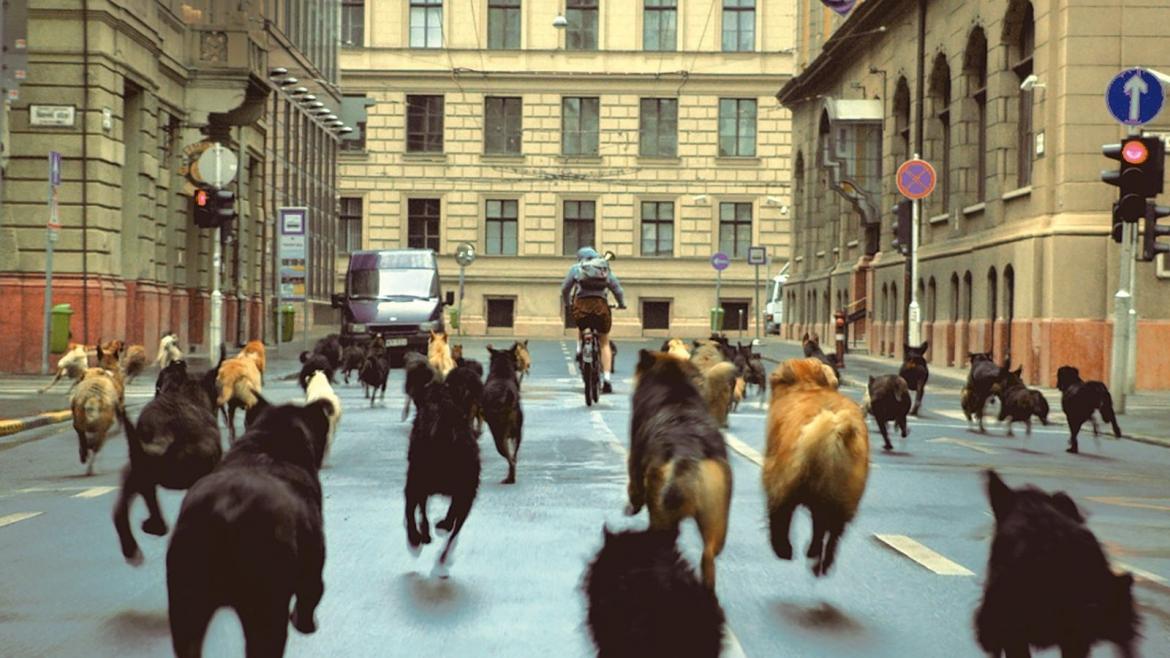
White God (Movie Review)
The problem of animals in film is the persistent problem of representation and meaning in film. A dog, is a dog, is a dog, but it’s also, you know, a dog. Jonathan Burt has written extensively on animals as propaganda tools, detailing the complex ways people respond to depictions of animals opposed to depictions of humans. The problem intensifies when moving to cinematic representation as the animal has the capacity to be nearly anything within such a framework. Burt’s analysis of Ridley Scott’s “Blade Runner” lays out these concerns with great clarity. Utilized by many early surrealist filmmakers the animal is a constellation of ideas and individual memories freed from the construct of character and deployed to tap into the instinctual. But it is also an actual organism subjected to human intents, humanitarian treatment, and ideological weight too grandiose for people to carry.
“White God” from Hungarian director Kornél Mundruczó plunges headlong to all those concerns. The film centers on thirteen-year-old Lili (Zsófia Psotta) and her dog Hagen. While left to stay with her estranged father for a few months, Lili and Hagen are forced to adjust to a small apartment where nosey neighbors seem hell-bent on getting Lili’s father to pay a new tax for the mixed breed dog. When Lili disobeys her father, Hagen is set out in the city to fend for himself and avoid dog-catchers intent on rounding up mongrel strays. Desperately Lili and Hagen search for each other while Hagen encounters some of humanity’s worst attributes and eventually enacts a citywide uprising of dogs, satisfying his blood lust.
Mundruczó and co-writer Viktória Petrányi draw out these correlations between ancestral purity and social status, digging into European immigration policy and shades of ethnic cleansing. And while the explicit references to mixed blood are a tad pointed the filmmakers know not to dwell on such lines, keeping the film from bogging down in didactic posturing. Rather, “White God” pays equal attention to Lili’s relationship with her father and her own transition into adolescence, a process which, fueled by disdain, becomes nearly as harrowing and intense as Hagen’s journey through abuse and subjugation.
These thematic concerns come together in the recurring usage of Franz Liszt’s Hungarian Rhapsody No. 2, which borrows a number of Hungarian folk melodies and rhythms. The piece is both indicative of a particular cultural tradition associated with art as a means for nation building while simultaneously calling to mind an older tradition of gypsy cultural and ethnicity itself viewed as something “impure” through centuries. (There’s also some great irony in that the piece gained international popularity through its performance by many anthropomorphic cartoon characters such as Bugs Bunny, Woody Woodpecker, and Tom & Jerry.) Throughout the film, Lili practices the piece with her orchestral class while also lifting segments of its melody to perform for Hagen on her trumpet in order to comfort him. Her contentious relationship with her orchestra conductor leads Lili to accuse him of “not knowing what love is”. It’s a moment in lesser hands would smack of artistic pretention. But in “White God” the moment is childish, true, accusatory, and pure. It’s a declaration that proves astoundingly poignant at the film’s climax and conclusion.
Mundruczó’s achievement in “White God” is that he maintains a firm grasp on all these aspects without imbuing the film with portentous finality. Big concepts are handled here, but the assured filmmaking and performances navigate a balancing act that results in a movie that’s visceral, angry, beautiful, and necesssary.

